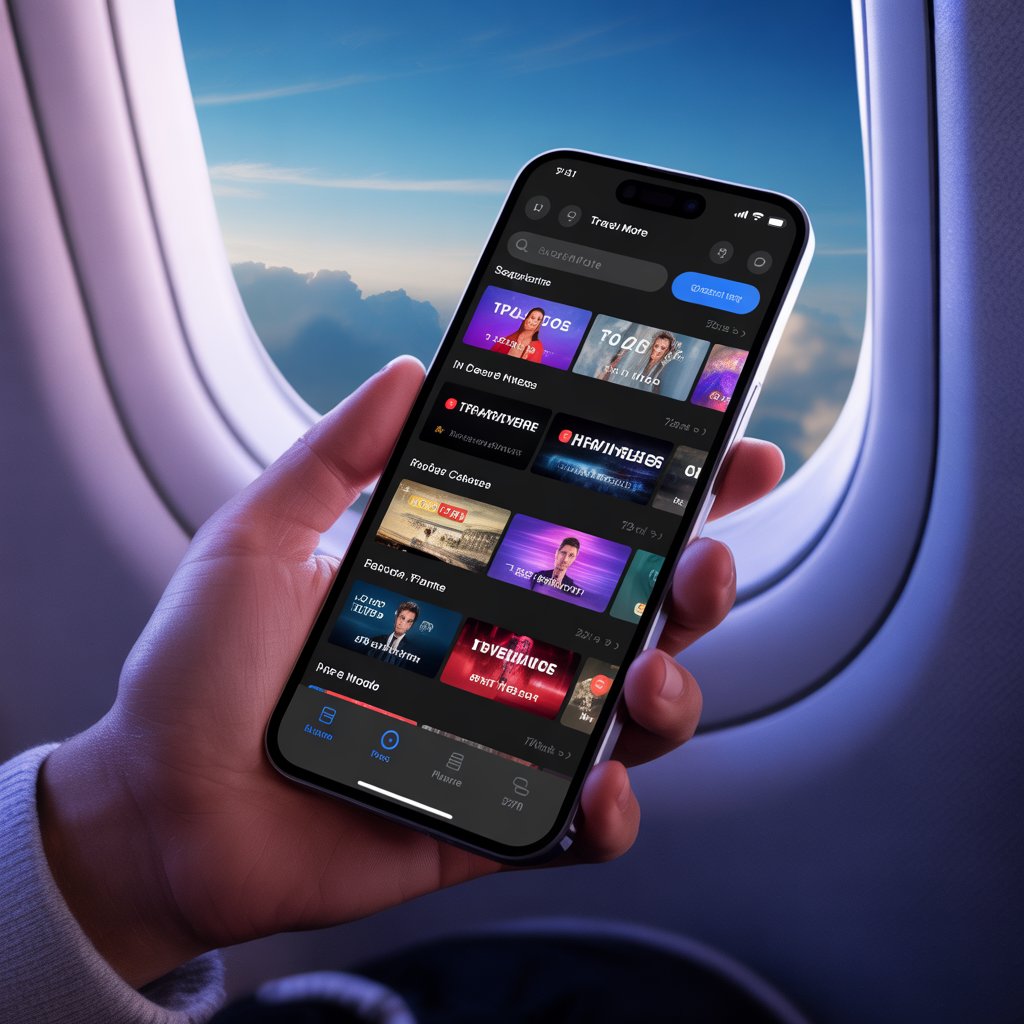IPTV while traveling USA

If you plan to use iptv while traveling usa, this friendly-professional guide will help you get set up safely and reliably. From selecting licensed services to testing hotel Wi-Fi and managing mobile data, you’ll find step-by-step advice and travel-specific tips to keep your streams running smoothly while you move between cities and states.
What this article covers
- Legal & licensing basics
- Device, connectivity and setup checklist
- Best practices to optimise streaming on the road
- Recommended, legal IPTV services for travelers
- FAQ and troubleshooting
- Final checklist and call to action
Legal & licensing basics for IPTV travelers
The underlying technology of IPTV is legitimate — it’s the distribution rights that matter. When you use iptv while traveling usa, ensure your provider has the proper U.S. distribution licenses for the channels and on-demand content they offer.
Unlicensed providers that promise hundreds of premium channels for an impossibly low price are often illegal. Using such services can lead to interruptions, account shutdowns, or — in rare cases — legal exposure. Focus on reputable, licensed services for the smoothest, safest travel experience.
Practical legal checklist before subscribing
- Confirm the provider publishes clear terms and U.S. coverage.
- Prefer services available on official app stores for U.S. users.
- Avoid providers that accept only anonymous payments (a red flag).
- Read the terms of service for geo-restriction and device rules.
- Keep receipts, emails, and a support contact handy while traveling.
Note: A VPN may help privacy but does not legalise unlicensed content. If a service is unlicensed, using a VPN to access it can still violate terms and local laws.
Devices, connectivity and setup — ready for the road
To watch iptv while traveling usa without surprises, get your device and connectivity plan in order before departure. The better prepared you are, the fewer interruptions when you arrive at hotels, Airbnbs, or while commuting.
Recommended devices
- Smartphones and tablets (iOS/Android) — great for mobility.
- Laptop with HDMI or casting support — useful when TV ports are available.
- Streaming sticks (Amazon Fire TV Stick, Roku, Chromecast) — bring a compact dongle if you prefer TV viewing.
- Universal power adapter and HDMI→USB-C cables if your devices vary.
Internet speed & data considerations
Streaming quality depends mostly on your internet speed. A general guideline:
- SD: ~3–5 Mbps
- HD (720p–1080p): ~10–15 Mbps
- 4K UHD: 25 Mbps or higher
If you rely on mobile data while watching iptv while traveling usa, be aware that HD streaming can consume 1–3 GB per hour. Check your carrier’s roaming and hotspot rules if you plan to use your phone as a tether.
Step-by-step setup for travelers
- Preload apps: Download and log into your IPTV apps (YouTube TV, Sling, etc.) before you leave home.
- Bring a dongle: Pack a compact streaming stick so you can cast to hotel TVs that allow HDMI input.
- Test at arrival: On check-in, test your stream early so you can switch to another plan if needed.
- Carry an Ethernet adapter: Many hotel rooms allow Ethernet — a wired connection beats flaky Wi-Fi.
- Monitor data: Use system tools to track data consumption if you’re on a capped cellular plan.
Tip: Save a few episodes for offline viewing if your service allows downloads — perfect for long flights or road trips.
How to optimise IPTV while traveling USA
Small adjustments go a long way. When watching iptv while traveling usa, manage quality settings, close bandwidth-hungry apps, and choose less congested networks for best results.
Quick optimisation checklist
- Lower resolution (720p) when Wi-Fi is slow.
- Use mobile hotspot if hotel Wi-Fi is unreliable (watch data caps).
- Disable cloud backups and automatic updates while streaming.
- Prefer wired connections or 5 GHz Wi-Fi channels when available.
Handling live events and sports
Live sports and events are latency-sensitive. If you stream live games while on the move:
- Test the stream 15–30 minutes before kickoff.
- Have a backup device and a second network (mobile hotspot) ready.
- Consider services known for low latency and high uptime if live sports matter to you.
Choosing the right IPTV service for travel
Not all IPTV providers are equal for travelers. When you pick a service, prioritise U.S.-friendly access, device support, and clear licensing. Using a reputable service reduces the chance of geoblocks or sudden outages while you’re away from home.
Features to prioritise
- Multi-device simultaneous streams
- Offline downloads for mobile devices
- Clear, transparent licensing and customer support
- Compatibility with mainstream streaming hardware
- Flexible subscription terms (monthly, no long lock-in)
Examples of reputable services (travel-friendly)
Many travelers choose established U.S. services that behave like IPTV: YouTube TV, Sling TV, fuboTV, Hulu + Live TV, and DirecTV Stream. These providers are widely available across the U.S., usually support multiple devices, and maintain better uptime than many smaller, gray-market IPTV offers.
| Service | Strengths for travel | Notes |
|---|---|---|
| YouTube TV | Large channel lineup, cloud DVR | Good mobile app and device support |
| Sling TV | Affordable packages, flexible | Smaller channel bundles but cheaper |
| fuboTV | Sports focus, reliable streams | Great for live sports fans |
Troubleshooting common travel problems
Problems happen — here’s how to resolve typical issues you’ll meet using iptv while traveling usa.
My stream is buffering — what do I do?
- Switch to a lower resolution.
- Try mobile hotspot if Wi-Fi is congested.
- Close background updates and apps that use bandwidth.
- If wired Ethernet is available, use it.
Content is geo-blocked
If you can’t watch content from your home country while in the U.S., check the service’s international access policy. If the service blocks access for legal reasons, a VPN is not a guaranteed fix and may violate the provider’s terms.
Device won’t connect to hotel TV
- Some hotels lock HDMI input — bring a streaming device that can use the hotel’s Wi-Fi directly or a laptop.
- Ask hotel tech support for instructions — they can often enable the port or provide an Ethernet pass.
Frequently asked questions
Can I use my home IPTV subscription while in the U.S.?
Sometimes. If your home provider allows international access and holds rights for U.S. streaming, you can. Otherwise you may be blocked or experience degraded service.
Should I use a VPN for IPTV while traveling?
Use a VPN for privacy if you must, but remember it does not legalise unlicensed content. VPNs can also reduce streaming speed — test performance first.
Is it safe to enter credit card info on public Wi-Fi?
Avoid doing sensitive transactions over public Wi-Fi. If you must, use a secure VPN and enable two-factor authentication on accounts.
Final checklist — ready to stream
- Confirm your IPTV provider is licensed for U.S. distribution.
- Download and sign into your apps before travel.
- Bring a compact streaming stick and a universal adapter.
- Test hotel Wi-Fi early and have mobile hotspot as backup.
- Monitor data use and reduce resolution when needed.
- Keep subscription proof and support contact info handy.
If you follow this checklist, you’ll minimise surprises and enjoy a much smoother experience using iptv while traveling usa.
Further reading & resources
- [Link to related article on streaming abroad tips]
- [Link to related article on meditation techniques]
- [Link to detailed guide on travel power adapters]
- [Link to WHO report on mental health]
Ready to stay entertained on the road?
If you found this guide helpful, subscribe for more travel tech tips, comment with your favorite travel streaming setup.
WhatsApp us
